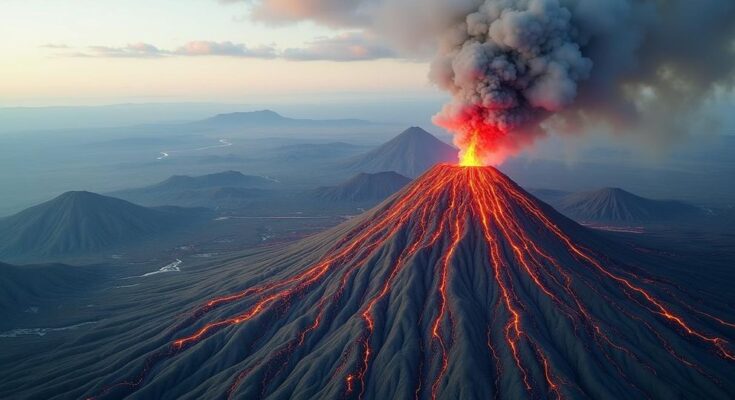Kīlauea volcano has experienced significant unrest marked by two magma intrusions in its upper East Rift Zone since July 2024. Previous intrusions happened in 2007 and 2011, showing a pattern of activity that may not dramatically alter eruptive status. Current monitoring seeks to capture changes post-2018 eruptions while maintaining an advisory alert level.
Since July 2024, Kīlauea volcano has been experiencing intense activity, especially in the upper East Rift Zone (ERZ), marked by numerous earthquakes and noticeable ground tilting. This unrest has been traced back to two significant magma intrusions between Pauahi and Makaopuhi Craters. Interestingly, this phenomenon isn’t new—similar intrusions were recorded in 2007 and 2011 during the Puʻuʻōʻō eruption period, illustrating a recurring pattern in Kīlauea’s seismic behavior. An intrusion happens when magma penetrates through subterranean rock, leading to ground deformation and seismic activity, yet it does not create a surface eruption. For instance, the 2007 Father’s Day intrusion closely mirrored the recent events but was notable for a very minor eruption, predominantly classified as an intrusion since most magma remained underground. Similarly, the 2011 Kamoamoa eruption, occurred on the ERZ too, but it did not significantly impact the ongoing eruptions at the Puʻuʻōʻō vent. While Kīlauea’s rift system has evolved with time, the 2018 eruptions left much of the rift less saturated with magma compared to 2007 and 2011. Currently, the upper ERZ is viewed as the “East Rift Connector” by some researchers, emphasizing its role in connecting the rift system to the caldera without the extensive subsurface movement previously noted. On July 22, 2024, a seismic swarm indicated that magma was moving within an underground crack aligned with the main rift direction, signaling a shift in activity. A second event on August 20 followed suit, showing consistent behaviors in the magmatic system. Ongoing inflation in the middle ERZ continues as scientists track the nuances of this complex storage framework. Though recent intrusions show the same geological patterns, their implications for Kīlauea’s future remain uncertain. In light of the previous eruptions’ limited effects, experts continue to monitor closely to anticipate any migratory changes in magma visibility, especially with enhanced monitoring efforts post-2018. Currently, Kīlauea remains non-eruptive, while the alert level is a watchful advisory. Earthquakes have settled to about 300 in the upper ERZ and 200 beneath Maunaulu and Puʻuʻōʻō recently. Meanwhile, Mauna Loa shows no eruptions—its alert level is stable at normal. The U.S. Geological Survey (USGS) Hawaiian Volcano Observatory (HVO) remains vigilant, prepared for potentially rapid shifts in volcanic activity.
Kīlauea is one of the most active volcanoes in the world, located in Hawaii. Its geological history encompasses a series of eruptions and intrusions, particularly characterized by its East Rift Zone (ERZ). The ERZ consists of different sections that behave distinctly in terms of rumblings and eruptions, with the upper section frequently experiencing magma intrusions. Over decades, the volcano has undergone significant changes, especially after the 2018 eruptions that emptied much of the magma stored in the rift, contributing to the current unrest that researchers are analyzing closely.
The recent unrest at Kīlauea reveals a continuation of historical patterns of magma intrusions in the upper ERZ. While past intrusions have not drastically altered eruptive behavior, the current geological context following the 2018 eruptions complicates predictions. Continuous monitoring by HVO aims to capture any signs of imminent activity changes, ensuring readiness for evolving volcanic behaviors. Kīlauea remains under advisory, with ongoing efforts to understand its complex dynamics.
Original Source: www.usgs.gov



